S3 is System Safety Solutions, a team of safety professionals who live, breathe, and believe in the processes and equipment necessary to perform daily tasks safely. Our fall protection specialists work to protect your employees and business from accidents/injuries or compliance penalties.
We provide safety solutions and services for OSHA/WAC and ANSI compliance in industrial, commercial, high-rise, manufacturing, retail, food, energy, and other specialty working environments.
We begin with a systematic approach to analyze your unique site’s needs that takes into consideration all known safe work objectives. S3 can develop the effective solutions necessary for not only compliance, but true safe working results to eliminate potential accidents and injuries.
Alongside any complete safety solution, is a complete program with system training and worker process auditing. These are integral for ensuring the actual protection of your employees and meeting compliance requirements.
Let us share our extensive experiences in safety to help your employees return home safely.
Fall Protection Solutions Require a Systematic Approach
Hazard Assessment & Structural Analysis
S3 hazard assessments are the first step in developing a proper fall protection solution. This requires an in-depth evaluation of the location of the fall and its type, access points, structural analysis, and manufacturer specific maintenance operations to be performed. This approach of including different work processes and types ensures a fall hazard assessment identifies the correct fall protection system that will work for everyone involved.
|
Engineering, Design, and Fabrication
Our attention to detail has allowed us the opportunity to find, design and fix flaws in engineered systems that did not allow certain work processes or procedures to complete a full safe work plan. This ability comes from our technician’s real use application experience, manufacturer knowledge and engineered principles. Our hazard assessment may identify deficiencies in a system. If that deficiency does not have a currently available solution, S3's team of registered professional engineers, designers and field technicians utilize hazard assessments in a fall system analysis to model fall protection systems effectiveness, forecast falls, develop rescue plans, provide training, documented inspections and auditing.
|
Construction & Installation
S3 supports our parent company System Inc. with daily efforts in construction, refurbishment and demolition of complete industrial heating and cooling systems throughout the greater Seattle area.
Our network of resources includes field technicians, registered professional engineers, safety professionals and manufacturer representatives, relaying critical information to design a safety solution for existing and upcoming hazards identified. This process includes analysis, design, construction, implementation, training, inspection, and auditing of the program.
|
Program & Auditing
Companies working in WA state are required to have a fall protection program that covers the potential hazards, implements an active or passive system of control of that hazard above 4’ or near dangerous exposures. This program must include a written fall work plan onsite for work 10’ or above per WAC 296-155. S3 technicians trained on that information begin the fall hazard analysis with the end goals of the site in mind, ensuring the system is designed effectively and is part of a complete fall protection program. When the equipment and program are in unity, the fall protection program training can be implemented. Jobsite auditing the work process (weeks) after training, ensures the training was effective and the fall protection system is being used safely by the authorized users.
|
Components of a Fall Protection System
In any workplace where employees operate at heights, prioritizing safety is paramount. Fall protection solutions play a crucial role in mitigating the risks associated with working at elevation. Four key components of these solutions are Fall Prevention, Fall Arrest, Fall Restraint, and Training.
Fall Prevention
Fall prevention focuses on eliminating or minimizing the hazards that may lead to a fall. This proactive approach involves identifying potential risks and implementing measures to address them. Examples include the installation of guardrails, safety nets, and warning lines to create a physical barrier, preventing accidental falls.
Fall Restraint
Fall restraint systems limit a worker's movement to prevent them from reaching a fall hazard. This is achieved by using lanyards or other devices that restrict access to dangerous areas near edges or openings. Fall restraint emphasizes keeping workers away from potential fall risks, reducing the likelihood of accidents occurring in the first place.
Fall Arrest
Fall arrest systems come into play when preventive measures are not sufficient, and a fall is likely to occur. These systems are designed to safely stop a worker in the event of a fall, minimizing the impact and preventing contact with the ground or lower levels. Components of fall arrest systems typically include a full-body harness, a shock-absorbing lanyard, and an anchor point.
Training
While physical components are crucial, comprehensive training is equally vital in ensuring the effectiveness of fall protection solutions. Proper training educates workers on the correct use of equipment, the identification of potential fall hazards, and emergency procedures. Well-informed employees contribute significantly to a safer work environment, reducing the likelihood of accidents and injuries.
There are many ways to provide fall protection, and the most effective approach depends on the specific circumstances.
Anchors can be used to provide a point of attachment for personal fall arrest systems. Horizontal lifelines can be used to create a continuous line of protection, making it easy for workers to move around without having to disconnect and reconnect their fall protection devices. Access platforms can also be used to provide fall protection, and they can be particularly effective in areas where there is a lot of movement or where work surfaces are uneven. By understanding the different options for fall protection, employers can ensure that their employees are protected from the dangers of falling.
- Fall protection design, equipment & installation
- Inspection and testing
- Access platforms, railings, and catwalks
- Horizontal lifelines
- Fall protection anchors for building access
- Custom fall protection systems
All of our solutions are engineered and designed by qualified professionals, ensuring that they are effective and meet all safety standards. No matter what your fall protection needs are, we have a solution that will keep you safe.
Contact us today to learn more about our Fall Protection solutions.
|
|
Gallery: Fall Protection
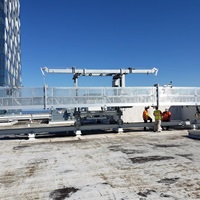
Façade Access
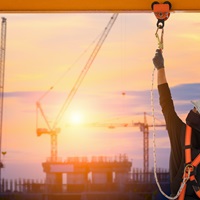
Lifelines
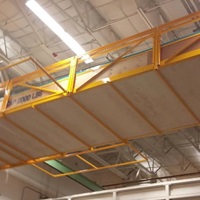
Mobile Platforms
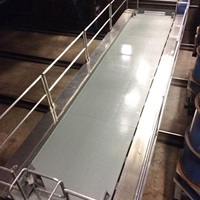
Custom Access
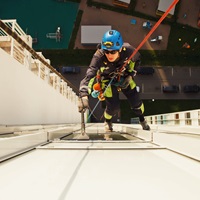
Rooftop Fall Protection
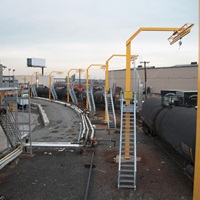
Equipment Access
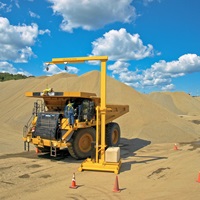
Portable

Platforms
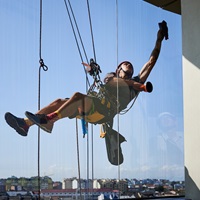
Rope Descent Systems
|
|